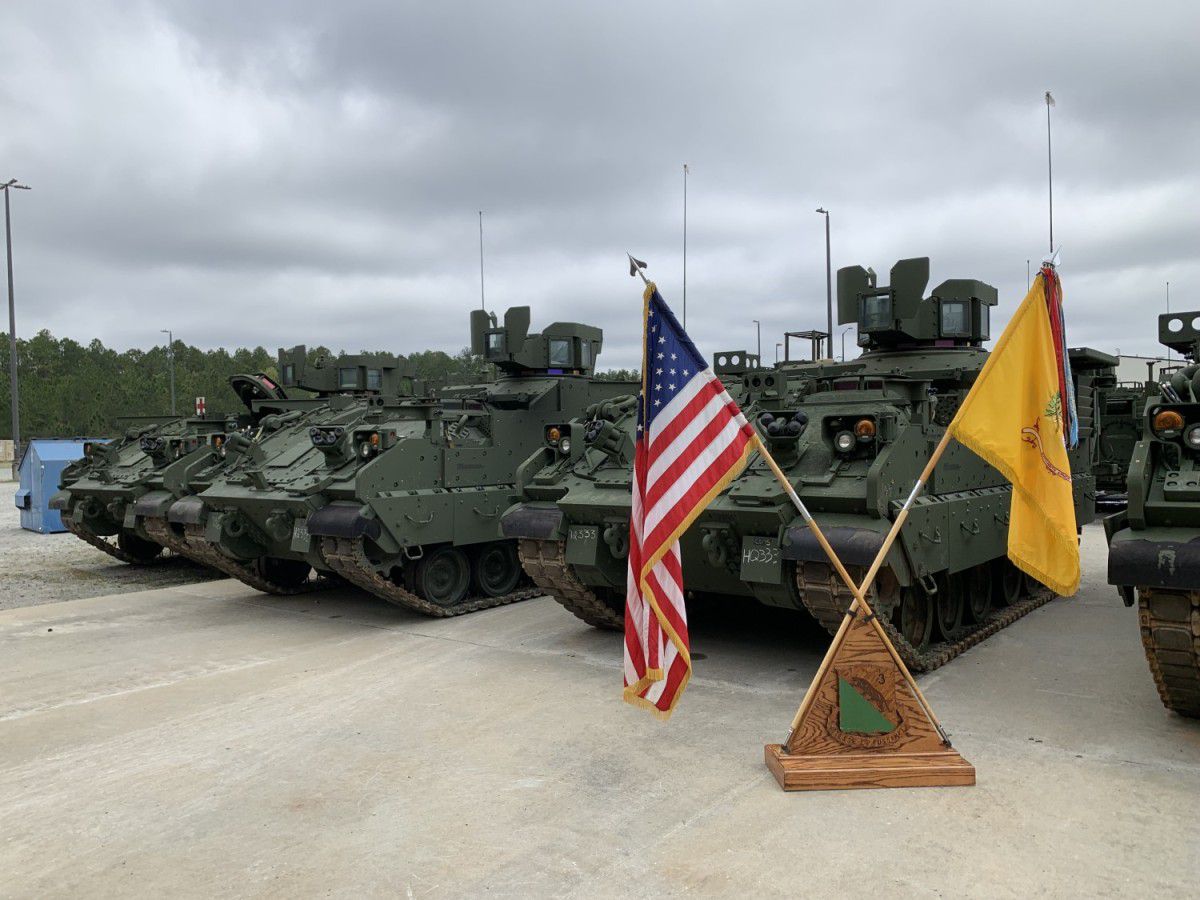WASHINGTON — The U.S. Army this week delivered the first BAE Systems-made Armored Multi-Purpose Vehicles to the 1st Armored Brigade Combat Team, 3rd Infantry Division at Fort Stewart, Georgia, marking the beginning of the end for M113 armored personnel carriers used since the 1960s.
“It’s been a long journey; about a decade ago, the Army embarked on an effort to modernize its armored brigade combat teams,” Jim Schirmer, deputy program executive officer for the U.S. Army’s Program Executive Office Ground Combat Systems, told reporters in a March 14 briefing.
The 3rd Infantry Division is the first of its type to have a fully modernized armored brigade combat team with Abrams SepV3 tanks, M2A4 Bradley infantry combat vehicles, M109A7 Paladin Integrated Management howitzers and now Armored Multi-Purpose Vehicles.
The AMPV shares common components with the howitzers and Bradley vehicles, including tracks, engines and transmissions, and will reduce the logistical burden on the unit, Schirmer said.
The milestone also signals a full-rate production decision is just around the corner for the program, which is expected by the end of the month, he added. BAE was recently awarded a $245.6 million contract to buy long-lead items to keep production moving.
The program is expected to heat up in the coming years, but the Army’s fiscal 2024 budget request released Monday calls for a lower number of AMPVs than planned a year ago, rather than the anticipated ramp-up.
The Army had laid out in its FY23 budget documents a plan to buy 131 AMPVs in FY24 for $682.4 million. Instead, the service’s base budget request asks for 91 vehicles for $555 million, according to budget documents.
But Schirmer said Tuesday that while the numbers look low in the base budget, the plan to ramp up AMPV procurement is partially funded through congressionally approved supplemental funding provided to the Army to cover some of the cost of sending M113s — roughly 400 — to Ukraine.
Army Chief of Staff Gen. James McConville told Defense News last fall that the service would not replace equipment and weapons sent over to Ukraine to help it fight off Russian invaders with “new-old stuff; what we want to do is buy new-new things.”
The intent is to “backfill that inventory with new vehicles, with AMPV,” Schirmer said. Using supplemental funding, the service plans to buy a total of 154 new vehicles.
According to AMPV product manager Lt. Col. Nate Costa, the Army will buy 197 AMPVs total in FY24 when combining base budget and supplemental funding, which roughly doubles the amount of AMPVs funded in the base budget.
Congress approved funding in FY23 to build 72 vehicles in its first year of production.
BAE Systems will now have to ramp up production from 12 vehicles a year to 16, and plans to do so within the next two years, according to Costa. This would build enough vehicles annually for a brigade and a half.
The Army in recent years, due to initial production struggles at BAE’s York, Pennsylvania, facility, had downgraded the plan to produce a brigade a year, but has been able to restore the original fielding plans back to the higher rate, according to Schirmer.
The AMPV program entered low-rate production in January 2019, but the program office indicated last year that delivery of the first vehicles would be delayed by two months, and the completion of the production qualification testing would be delayed by seven months due to tooling and assembly line challenges at York. Coronavirus pandemic complications further slowed the effort.
“We did have a lot of struggles in the beginning, and we’re pretty confident now that the prime contractor BAE has worked through that. So they’ve been delivering on time for the vast majority of the past year, and the quality problems that we were seeing early on have largely been corrected,” Schirmer said.
To get BAE ramped up to 16 vehicles a month, additional investment is required, Schirmer acknowledged, adding that the funding exists to produce more than a brigade and a half a year, but the company does not have the capacity right now.
According to Costa, BAE is working through how it will adjust its production to ramp up, including evaluating what additional space might be required. He said the company does need more room for machining and welding to build at a faster rate, and has identified some space at the York facility to do that.
The company, Costa noted, is also looking at purchasing additional welding robots and increasing paint booth capability, “which helps on the output for the vehicles.” BAE likely needs to hire more employees for the assembly and fabrication lines, he added.
Jen Judson is an award-winning journalist covering land warfare for Defense News. She has also worked for Politico and Inside Defense. She holds a Master of Science degree in journalism from Boston University and a Bachelor of Arts degree from Kenyon College.

